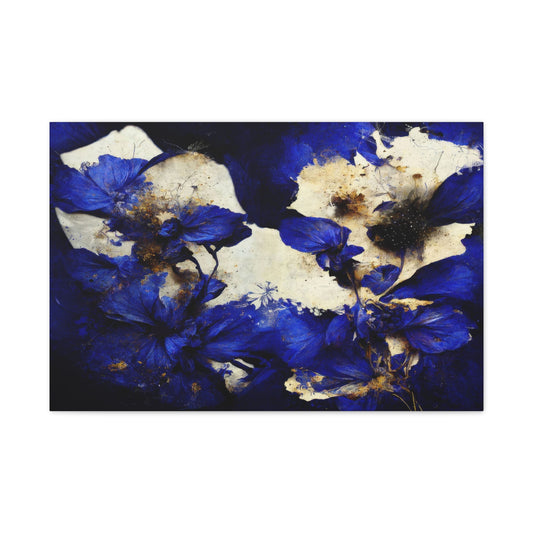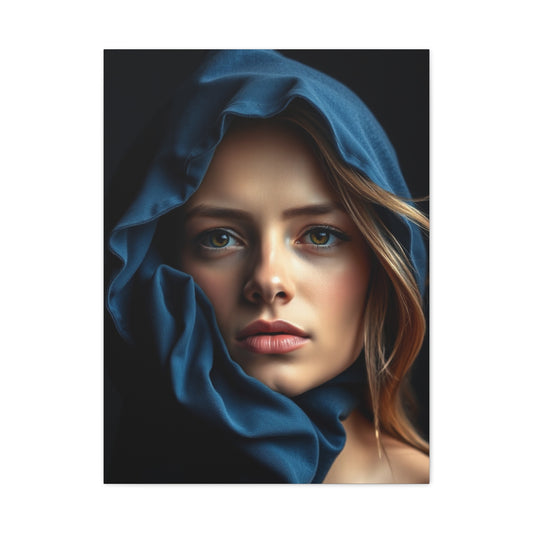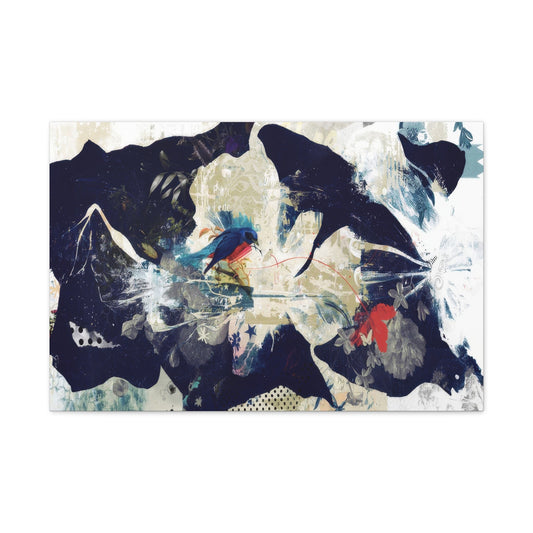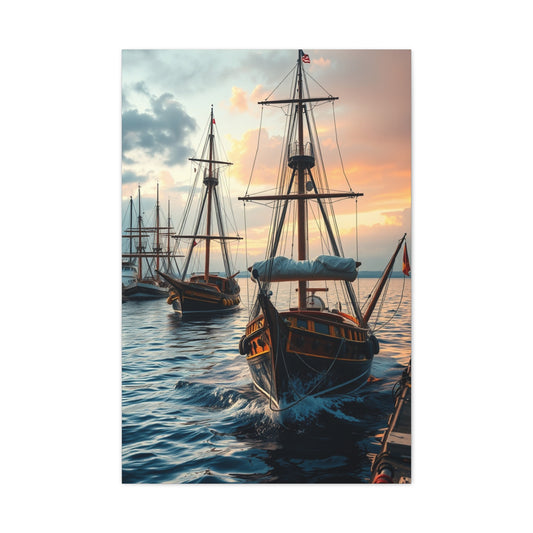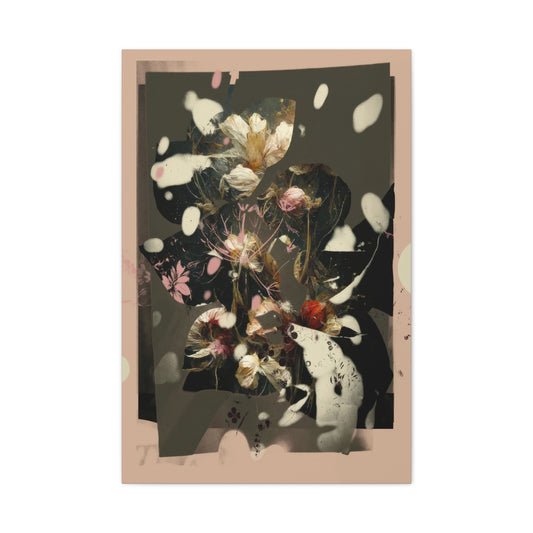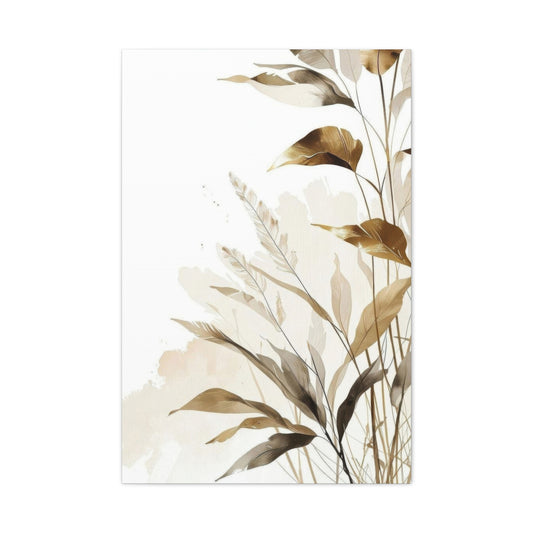Jonathan Pitts: A Painter's Journey into the Untamed Beauty of Nature
Jonathan Pitts’ artwork is an exploration of nature’s untouched beauty, captured without human intervention. His paintings offer viewers an unfiltered view of vast landscapes, illustrating the raw and primal essence of the earth. Unlike conventional landscape paintings that often romanticize nature through human-made structures or idealized settings, Pitts’s approach is both revolutionary and immersive. He takes us beyond traditional depictions, allowing the natural world to speak for itself. Through his unique style, Pitts creates artworks that evoke deep emotions and reflect the unrelenting power of nature’s beauty.
What sets Pitts apart from other landscape artists is his dedication to portraying the land in its most unaltered state. His paintings are not merely representations of scenery; they are visual experiences that embody the quiet strength of the natural world. By stripping away human presence, he invites us to engage with the landscape on a more profound level, offering a sense of serenity while also hinting at the underlying tension inherent in nature’s forces. In every stroke of the brush and every chaotic drip of paint, Pitts seeks to capture the pulse of nature’s rawness, giving us a glimpse into a world that feels both tranquil and tumultuous.
Through his mastery of materials, Pitts creates an environment where paint becomes as much a part of the landscape as the brushstrokes themselves. He allows the paint to move on its own, embracing the organic flow of his materials and surrendering to the natural processes at play. This sense of freedom in his work stands in stark contrast to the carefully composed and digitalized representations of the world we often encounter in contemporary art. Pitts’ paintings, in their most visceral form, echo the spontaneous rhythms of nature itself.
The Organic Process Behind Jonathan Pitts’ Art
One of the most striking aspects of Jonathan Pitts’ work is his deep connection to his medium. He does not rely solely on preconceived plans or methods, but rather allows the materials he uses to dictate much of the artistic process. There is a deliberate spontaneity in his approach, a dance between the artist and the elements of his craft. As the paint splashes, drips, and stains, it mirrors the untamed and unpredictable forces of nature. However, this apparent chaos is not without purpose; rather, it forms the bedrock of the artist’s carefully crafted compositions.
Pitts’ artistic process resembles the earth’s creative force, a constant interplay between order and disorder. The aggressive scratching of the canvas with sticks, the deliberate splattering of paint, and the vigorous brushstrokes serve as interventions that allow the artist to direct the natural energy of his medium into a coherent whole. Each mark is intentional, a reflection of Pitts’ understanding of his craft and his intimate relationship with the forces at play in his work. While there is a sense of rawness and unpredictability in the result, it is also evident that each painting is the product of a thoughtful and refined process.
The beauty of Pitts’ art lies in this tension between chaos and control. His works are not simply landscapes in the traditional sense, but rather an abstract interpretation of the land itself. He focuses on capturing the essence of nature’s grandeur, using his materials as tools to reveal its untamed beauty. The resulting pieces resonate with a visceral energy that draws the viewer in and invites them to experience the natural world on a deeper level. By allowing nature to shape the composition while guiding it with his interventions, Pitts creates a visual narrative that speaks to the ever-present forces of creation and destruction in the world.
Pitts’ Abstract Landscapes: A New Way of Seeing Nature
Jonathan Pitts’ landscapes are not conventional depictions of the land; they are abstract expressions that offer a new perspective on nature’s power. Rather than focusing on the literal, he emphasizes the emotional and sensory experience of being immersed in the natural world. His landscapes are vast and untamed, filled with raw textures and sweeping compositions that evoke a sense of the sublime. In this way, his paintings challenge traditional notions of landscape art, urging viewers to see nature not as a static scene but as a living, breathing entity full of energy and movement.
What makes Pitts’ work stand out is the emotional depth it conveys. The paintings are not simply beautiful to look at, but they elicit a powerful emotional response from the viewer. The textures, the strokes, and the drips of paint combine to create a visual representation of nature’s primal energy. Each piece feels like an invitation to step into the landscape, to feel the pulse of the earth beneath your feet and the wind on your face. There is a profound sense of engagement with the natural world in his art, one that goes beyond admiration and taps into something more elemental and introspective.
Through these abstract landscapes, Pitts offers viewers a chance to connect with nature on a deeper, more personal level. The vastness of his compositions creates a sense of freedom, inviting viewers to reflect on their place within the natural world. The paintings do not dictate a singular interpretation; instead, they leave room for the viewer’s own experiences and emotions to inform their understanding of the landscape. The absence of human figures in his work allows for a more expansive and open interpretation, where the viewer can project their feelings and thoughts onto the canvas, making each viewing experience unique.
Ultimately, Jonathan Pitts’ art goes beyond the boundaries of traditional landscape painting. It is a dialogue between the artist, the materials, and nature itself, one that transcends mere visual representation and delves into the emotional and sensory experience of being in the natural world. His paintings evoke the beauty, the chaos, and the majesty of nature in a way that traditional landscape art simply cannot. By embracing the rawness of nature and the unpredictability of his medium, Pitts creates works that are not only visually striking but also deeply engaging on an emotional level.
As viewers immerse themselves in his abstract landscapes, they are invited to see the world not through the lens of human influence but as it exists in its most authentic form. Jonathan Pitts’ work is a celebration of the natural world in all its grandeur and complexity, a reminder that nature is not just a backdrop for human activity but a force in its own right, deserving of our awe and reverence. Through his art, Pitts challenges us to slow down, to reflect, and to truly see the earth as it exists without the distortions of human presence. His landscapes are not just images to be admired; they are experiences to be felt and understood, each offering a new way of engaging with the world around us.
Jonathan Pitts’ Mastery of Material Dialogue in Art
Jonathan Pitts’ art stands out for its unique and deeply engaging relationship with materials. Unlike many artists who meticulously plan each step of their creative process, Pitts approaches his work with an instinctual, almost organic understanding of his mediums. This distinctive characteristic of his, allowing the materials themselves to play a role in the creation of the final piece, forms the heart of his landscapes. Rather than being constrained by predetermined ideas or techniques, Pitts embraces a dynamic interaction with the canvas, wherein the paint is not merely a medium but a co-creator. This conversation between the artist and his materials is a pivotal element in the striking success of his work, imbuing it with life, energy, and a sense of spontaneity.
Pitts utilizes a diverse array of materials, each chosen for its specific properties and potential to interact in unexpected ways. His repertoire ranges from thick, textured oils that can be layered and manipulated for bold, dramatic effects to delicate, transparent washes that seem to pool and stain the canvas with fluidity and grace. This variety of materials is not just a technical choice but an essential part of his philosophy. Each substance possesses its own temperament, from the heavy, dense oil paints that require forceful application to the fragile, transient nature of washes and glazes that respond almost like living beings to the artist’s touch. The contrast between these materials, and their interplay on the canvas, allows Pitts to explore themes of tension and harmonynatural forces that constantly ebb and flow in the world around us.
The landscapes created by Pitts are not static representations of nature; they are living, breathing depictions of the natural world that evolve throughout the creative process. By allowing the paint to respond to his touch, Pitts creates compositions that seem to change with time. The materials themselves take on qualities that mimic the forces of the wind, rain, and passage of time. Just as a landscape evolves naturally, so too does Pitts’ work, growing, shifting, and adapting to the artist’s interventions. Each brushstroke, each mark made on the canvas, is not merely an action dictated by intention but a moment of reaction to the materials’ own responses. In this way, the artist does not simply control the work but invites the medium to contribute, turning the canvas into a dialogue between painter and material.
The Role of Spontaneity in Pitts’ Creative Process
One of the most striking aspects of Jonathan Pitts’ creative process is his ability to relinquish control and embrace spontaneity. Unlike many artists who approach their work with a clear vision and set expectations, Pitts allows the materials to lead the way. His paintings do not emerge from a rigid plan or preconceived notion of what the final piece should look like. Instead, they develop organically, as a product of a series of spontaneous actions and decisions. This approach not only allows for a sense of freedom and fluidity in the work but also lends it a natural sense of unpredictability. A splash of color here, a smear of paint there, the mark is the result of an intuitive response to the moment, driven by inspiration rather than strict intention.
The beauty of Pitts’ landscapes lies in their sense of balance despite the unpredictability of the process. Even though the artist is not trying to control the outcome, there is an undeniable harmony in the way the elements come together. Each stroke and splash of paint, while seemingly spontaneous, works together to create a unified composition. This is where Pitts’ skill as an artist truly shines. He has mastered the delicate art of allowing the medium to dictate the flow of the work, while still maintaining an underlying sense of cohesion. The result is a painting that feels aliveone that breathes with the energy of its own creation. It’s a process that mirrors the natural world, where forces are constantly in flux but still come together to form something beautiful and harmonious.
Pitts’ willingness to let go of control also means that he is not fixated on achieving a specific outcome. Where other artists may adhere to a strict vision, Pitts trusts in the unpredictability of the materials and the process itself. This approach allows the work to evolve naturally, reflecting the same spontaneous rhythms that characterize the ever-changing landscape. His landscapes are not idealized or sanitized versions of nature; they are raw, emotional responses to the world around him. They contain an element of risk, a tension between what is expected and what emerges, and this is precisely what gives them their power and depth.
The Tension of Intervention: A Powerful Contrast in Nature’s Forces
Another key aspect of Jonathan Pitts’ work is his willingness to introduce tension into his compositions. While much of his work is defined by a harmonious interplay between materials, there are moments when Pitts intentionally disrupts this balance, creating moments of raw, visceral energy. These interventionswhether they come in the form of aggressive brushstrokes, deliberate slashes with sticks, or the energetic application of paintintroduce a striking contrast to the calm beauty of the natural landscapes he is seeking to represent. This tension between controlled calm and chaotic intervention mirrors the unpredictable forces of naturestorms, winds, and eruptions that both create and destroy in equal measure.
Pitts’ interventions are not meant to dominate the composition but rather to add depth and complexity. These marks of aggression serve to highlight the contrasts between the light and dark elements of nature, creating a sense of emotional resonance that wouldn’t be present in a more restrained or polished work. Just as in nature, where forces often collide in powerful and unexpected ways, Pitts embraces the raw, primal energy of his materials. His paintings thus become an exploration of the inherent chaos and order that coexist within the landscape. By introducing these moments of intense intervention, Pitts deepens the emotional impact of his work, adding layers of meaning and complexity that invite the viewer to explore the tension between calm and violence, order and disorder.
This powerful contrast enhances the viewer’s understanding of the natural world. By allowing the materials to react in unexpected wayssometimes harshly and aggressively, sometimes softly and fluidlyPitts creates a sense of realism that transcends traditional representations of landscapes. His work invites us to reconsider the idea that nature must be tamed or controlled. Instead, it presents a vision of the world that is as untamed, unpredictable, and alive as the forces that shape it. The earth, in all its complexity, is not something to be subdued; it is something to be respected, engaged with, and understood in its full range of expressions.
Through this raw, unfiltered approach to painting, Jonathan Pitts pushes the boundaries of what landscape art can be. His work is not just a representation of nature; it is a celebration of the raw forces that make nature both beautiful and terrifying. It challenges the viewer to embrace the unknown, to accept that the process of creation is as much about surrender as it is about control, and to recognize that beauty lies not only in perfection but in the imperfect, the unpredictable, and the dynamic.
By embracing this dialogue with materials, Pitts not only creates art that speaks to the essence of the natural world but also redefines the way we think about the relationship between artist and medium. His landscapes, filled with energy, spontaneity, and tension, invite us to explore the complexity of natureand the human experiencein all its raw, untamed beauty.
Nature’s Chaotic Beauty: Embracing Destruction and Resilience in Pitts' Work
Nature is a force that refuses to be tamed. It’s often unpredictable, chaotic, and destructive. And this is exactly what Jonathan Pitts aims to convey in his work. His landscapes are not still, peaceful depictions of untouched beauty; rather, they are dynamic portrayals of nature’s darker side. The unpredictable aspects of nature, such as thunderstorms, wildfires, and earthquakes, are crucial to the evolution of the earth. They shape the land in ways that cannot be controlled, and Pitts seeks to capture this energy through his aggressive interventions on the canvas.
In his art, Pitts doesn’t just show nature as it appears at a moment in time. Instead, he portrays the violent forces that are constantly at work in the environment. The deep scratches and rough marks he applies to the canvas mimic the constant erosion, upheaval, and transformation happening beneath the earth's surface. His marks are not accidental; they are deliberate actions that symbolize the uncontrollable energy of the land. These interventions act as metaphors for the destructive and transformative forces that have shaped the earth for millennia.
Pitts’ landscapes reflect both the beauty and the brutality of nature. While the forceful brushstrokes and marks might appear harsh or unsettling, they are an essential part of the landscape’s evolution. Just as nature is resilient in the face of destruction, so too is Pitts’ art a testament to the earth’s ability to adapt, change, and thrive. These marks on the canvas capture the essence of nature's raw power and the way it constantly transforms the world around us. In doing so, Pitts offers a more honest, unvarnished view of the landscape that embraces both the violent and the beautiful aspects of the natural world.
The Dynamic Energy of Nature: How Pitts’ Brushstrokes Bring Landscapes to Life
What truly sets Jonathan Pitts apart from many other landscape artists is his ability to imbue his paintings with a palpable sense of energy. When you look at his work, it’s as if the earth itself is alive beneath the brushstrokes. His interventions on the canvas are not delicate or controlled; they are fierce, spontaneous, and full of raw emotion. The way Pitts applies paint to the canvas seems almost like an extension of the land itself expression of the land’s own primal energy.
Pitts’ brushstrokes are energetic and charged with intensity. They are not just marks on a surface; they are a representation of the earth's ongoing process of change. The spontaneity of his gestures adds a sense of urgency to his paintings, creating a landscape that is not static but is instead in constant motion. There’s a tension in the work sense that the land is on the verge of transformation, and that energy can almost be felt radiating off the canvas. Each mark, each scratch, is an act of interaction between the artist and the land, bringing the landscape to life in a way that feels almost physical.
The beauty of Pitts’ work lies in this connection to the land. His paintings are not simply an image of nature; they are a reflection of the untamed spirit of the earth. The rough brushstrokes and forceful interventions are not an assault on the viewer, but rather an invitation to witness the powerful forces that shape our world. Nature, after all, is not a passive force. It is a dynamic, constantly evolving entity, full of energy and movement. Through his art, Pitts gives us a glimpse into this ever-changing, vibrant world.
By embracing the brutality of nature, Pitts challenges us to rethink our relationship with the environment. He pushes us to recognize that the beauty of the landscape is not just found in its tranquility but also in its wildness, its chaos, and its capacity for destruction and regeneration. This raw, unfiltered view of nature offers a deeper understanding of the world we live in, reminding us that nature is not something to be controlled or subdued; it is a force to be respected, revered, and experienced in all its power.
Resilience Through Destruction: Jonathan Pitts’ Tribute to the Earth
Pitts’ landscapes are not just depictions of the natural worldthey are a tribute to the resilience of the earth. Nature is a force that endures and adapts, and so too does Pitts’ painting evolve with each stroke. The aggressive marks on the canvas are not meant to be confrontational but instead are a reflection of the dynamic, ever-changing world that exists beyond human civilization. Nature’s ability to regenerate, rebuild, and evolve is at the heart of Pitts’ work. The destructive forces he portrays are not meant to be feared, but to be understood as part of a larger cycle of growth and transformation.
The Earth is constantly shifting literally and metaphorically. Just as landscapes are shaped by forces like weather, geological activity, and human intervention, so too is Pitts’ artwork shaped by his interactions with the land. Each brushstroke, each mark, is an act of transformation, a way of engaging with the land and its inherent power. These marks become part of the landscape, not just as representations of nature, but as an acknowledgment of its ever-changing, resilient spirit.
In this way, Pitts’ work serves as a reminder of the earth’s resilience. Despite the chaos and destruction that nature can bring, there is always a sense of renewal and growth. The Earth has a way of bouncing back from even the most catastrophic events. Pitts captures this process through his aggressive, energetic interventions, transforming the canvas into a living, breathing representation of the land’s endurance and strength. Through his art, he acknowledges that nature’s brutality is an essential part of its beautyone that should be respected, not feared.
Pitts’ landscapes challenge the viewer to engage with nature on a deeper level. Rather than simply admiring the beauty of a peaceful, untouched landscape, Pitts invites us to experience the true power of nature in all its forms. From the raw, chaotic energy of a storm to the slow, steady resilience of the earth’s regeneration, his work forces us to confront nature’s full spectrum of force and beauty. Through this, he creates a connection between the viewer and the land, reminding us of our place in a world that is far larger and more powerful than we often realize.
The Interplay of Chaos and Control in Jonathan Pitts' Work
Jonathan Pitts’ artistic approach thrives on an intricate dance between chaos and control. His landscapes are more than mere expressions of color and texturethey are a profound exploration of balance. In Pitts' paintings, the viewer can witness a captivating dynamic, where the free flow of materials and the eruption of color blend seamlessly with moments of quiet reflection. This delicate equilibrium lies at the heart of his work, and it’s this very balance that lends an emotional depth to his landscapes. Each piece carries a subtle invitation to experience nature not just as it appears, but as it feels alive, changing, and layered with meaning.
Pitts demonstrates a remarkable ability to merge the raw power of unrestrained expression with deliberate compositional choices, making every brushstroke, texture, and mark both significant and intentional. His paintings are not impulsive outbursts; rather, they are structured eruptions of emotion that seem to fall perfectly into place. Each stroke is like a deliberate note in a symphony, contributing to the overall harmony. While the artwork may appear spontaneous, each element is thoughtfully guided by the artist’s deep understanding of the medium. This seamless fusion of control and chaos allows the viewer to lose themselves in the narrative of the painting, as though they are exploring the very essence of existence, where every uncontrolled brushstroke is a new possibility unfolding within the confines of structure.
There’s a subtle tension at play in Pitts’ work. It is a tension between yielding to the freedom of the material and asserting control over the composition. This conflict between letting the paint take charge and directing its flow is what makes his landscapes so compelling. He taps into this tension to reveal not just the raw, untamed energy of nature but also its underlying structure and order. His work evokes the paradox of natureitselfe constantly shifting forces that govern the world, yet within them, there is an unspoken symmetry and grace. As a result, his paintings convey a sense of both vitality and tranquility, making the viewer feel that they are looking at something profoundly real reflection of nature in its purest, most emotional form. It is this masterful interplay that creates a lasting resonance, as if the landscape is both a place to be entered and a moment to be understood.
The Artist as a Creator and Collaborator
One of the most striking aspects of Jonathan Pitts’ creative process is his ability to collaborate with the very materials he works with. Rather than imposing his will entirely on the medium, he allows the paint to guide him, listening intently to its responses. This process reflects a kind of patience and intuition that is essential for creating art that resonates deeply with the viewer. Pitts does not simply dominate the paint; instead, he enters into a dialogue with it, where both the artist and the medium influence the outcome.
This collaborative process requires a deep understanding of the materials at hand and an ability to respond to them in real-time. For Pitts, painting is not a rigid or fixed endeavor; it is fluid and responsive. As he works, he senses the next move, guided by the natural flow of the paint, yet always steering it toward his final vision. This ability to be both creator and collaborator allows him to produce works that feel both grounded and spontaneous, controlled and wild.
The back-and-forth between the artist and the materials mirrors the natural world itself. Just as nature is in constant flux, with moments of fierce chaos interspersed with calm, Pitts’ creative process reflects that same dynamic. His landscapes are not static imagesthey are vibrant, evolving processes, capturing nature in all of its unpredictable beauty. By working in this collaborative way, Pitts produces art that feels alive, offering the viewer not just a visual representation but an emotional experience that mirrors the shifting forces of the natural world.
In embracing this fluidity, Pitts permits himself to make mistakes and to evolve alongside the work itself. The result is a process-driven journey, where the boundaries between artist, medium, and subject blur into one cohesive experience. This openness to evolution, to being reshaped by the very paint he uses, grants his artwork a sense of authenticity that is hard to replicate. It’s a direct invitation for the viewer to experience the rawness of creation, rather than just admiring a finished product.
What emerges from this synergy between the artist and the paint is something beyond simple representation; it becomes an immersive experience. The viewer, standing before Pitts’ works, is transported into a space where the lines between reality and the abstract become less defined. The landscapes he creates are not merely depictions of nature, but translations of the ever-shifting energies of the earth. Just as a river flows, carving new paths and altering its course, Pitts’ paintings echo these very principles of constant motion and transformation.
There is a certain vulnerability in this approach, as the artist relinquishes some control, allowing the medium to dictate the direction of the work. Yet, this vulnerability is where the strength of his art lies. In giving the paint its voice, Pitts is not just acknowledging the power of the materials, but the unpredictability of life itself. The imperfections, the cracks, the streaks, and the layers of paint each represent a moment of learning, a moment of dialogue between the creator and the medium. It’s in these small, seemingly accidental moments that the true beauty of Pitts' work is revealed.
In this way, the collaborative process becomes a metaphor for life itself. We, too, are in constant interaction with the forces around shaping and being shaped, asserting control while simultaneously yielding to the unforeseen. Just as Pitts listens to the paint, we, too, must listen to the world around us, remaining attuned to the rhythms and flows of our environment. This dance between control and surrender is where true creativity resides, and in Pitts’ work, it is this delicate balance that allows the art to speak so profoundly. His landscapes become more than scenes; they are visual meditations on our relationship with the world reminder that art, like nature, is never truly finished, always evolving and always alive.
Chaos and Order in the Landscape: A Reflection of the Natural World
Jonathan Pitts' landscapes do more than represent nature; they embody it. His paintings are a vivid testament to the delicate balance between chaos and order that exists in the world around us. Like nature itself, Pitts’ art resists being confined to a singular narrative or interpretation. The raw, emotional quality of his work allows him to capture nature’s complexities in a way that realism cannot. Through his bold use of color and texture, he invites the viewer to experience the land as an untamed, ever-changing force that is both brutal and beautiful.
At a closer glance, Pitts’ landscapes reveal a web of textures and marks, each contributing to the emotional resonance of the painting. The apparent chaos, explosion of color, jagged brushstrokes, and unexpected composition isn’aren’tn’tm. Rather, it’s a carefully constructed visual symphony that represents the energy and unpredictability of nature. Yet, within this seeming chaos, there is a discernible rhythmic sense of order that brings the painting into balance. Each mark and stroke, while appearing forceful at first, works in concert with the others, creating a sense of harmony within the apparent tumult.
This dynamic interplay between chaos and order reflects the natural world’s complexities. Nature is not simply one thing is a fusion of opposing forces, with moments of extreme force coexisting with periods of stillness. The landscape, in all its variations, holds both destructive and creative potential, and Pitts captures that essence in his work. His paintings remind us that beauty is not always serene or predictable. It can be wild, unpredictable, and even harsh, yet still possess a profound sense of order beneath the surface.
Pitts’s ability to capture both the violent and serene aspects of nature makes his work so powerful. His landscapes don't just show us nature; they immerse us in its raw, untamed energy. They compel us to feel the world in its full emotional spectrumfrom the chaotic forces that shape the land to the quieter, more contemplative moments that emerge when those forces come into balance.
Through his art, Pitts presents a unique vision of the world where chaos and order are not opposites but partners in an ongoing, dynamic process. His work provides an emotional reflection of the natural world that transcends simple representation, offering instead a window into the deep, shifting energies that govern the land. By embracing both the chaos and the control inherent in his process, Pitts gives us a glimpse into the ever-changing, often contradictory beauty of the world around us.
As we stand before one of Pitts’ landscapes, we are reminded of the complexity of the world we live in. The beauty of his work lies not just in its aesthetic appeal but in its ability to capture the essence of nature’s dynamic forces. The artist’s dance between order and chaos offers us a glimpse of the land in its most raw and emotional state place where beauty is never static and where even the most chaotic elements can come together to create something harmonious and breathtaking.











